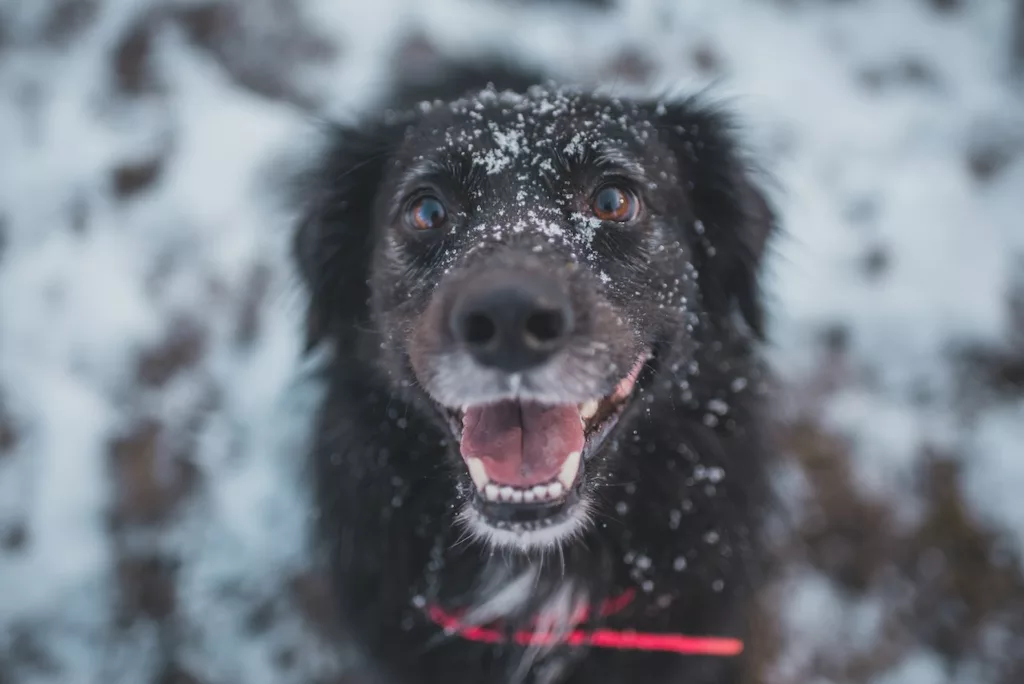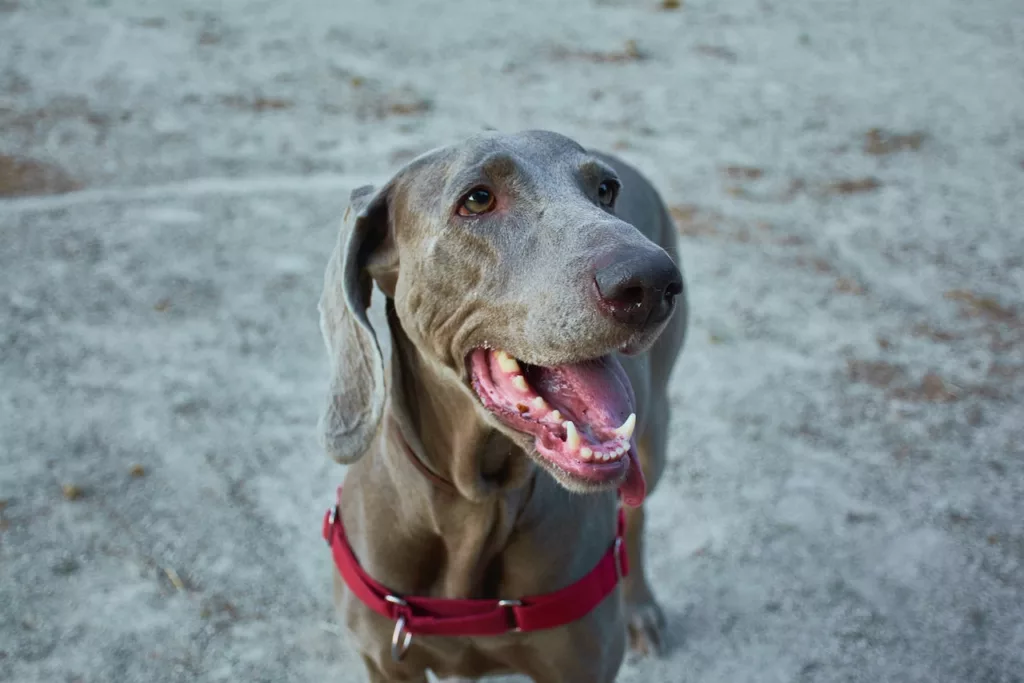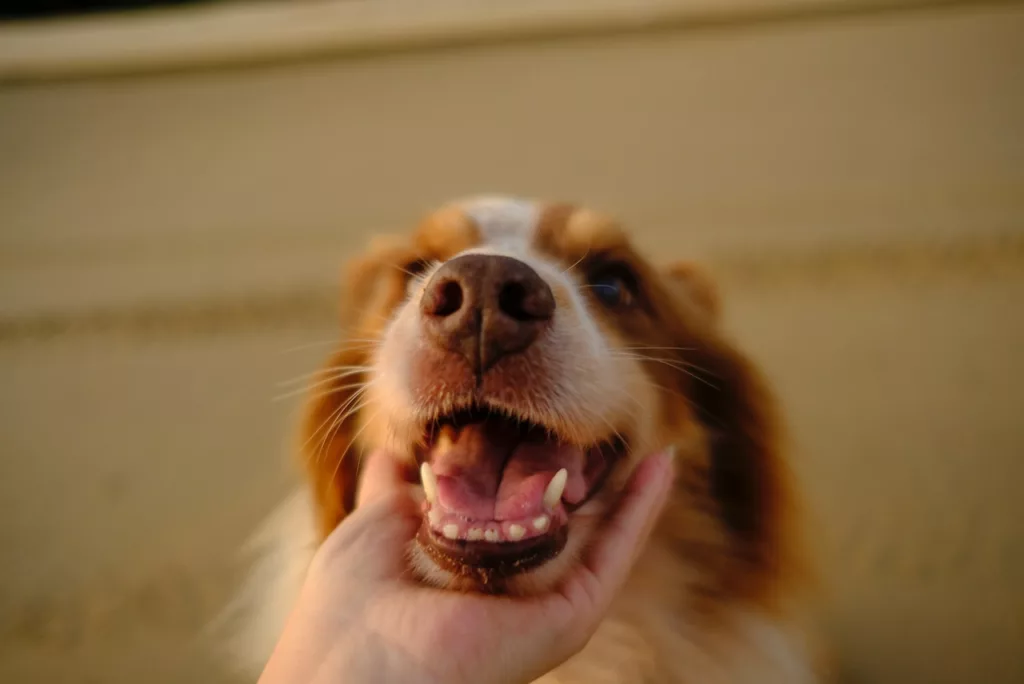As you may be aware, the teeth of animals are uniquely suited to their particular diet. Dogs are meat-eaters and have sharp teeth for tearing flesh and cutting food. However, have you ever wondered how many teeth of each type a dog’s mouth contains? If you’re curious, join us in this article as we discuss how many teeth do dogs have.
Table of Contents
You may also be interested in the: Can dogs eat hummus? What are the best alternatives to chickpeas for my dog?

How many teeth do dogs have?
Dogs, much like humans, are heterodonts, which means they possess teeth that come in different shapes and sizes. Our beloved canine companions specifically have four types of teeth: incisors, canines (or fangs), premolars, and molars. The dental formula is a chart that shows how many teeth an animal has of each kind. To interpret this diagram, we need to consider the following points:
- Teeth are numbered in the following order: incisors (I), canines (C), premolars (P), and molars (M).
- The numerator pertains to the upper arch (maxilla), while the bottom number pertains to the lower arch (mandibular).
The dental formula shows teeth on one side (left or right) and both sides have the same number of teeth.
- This is because the mouth is symmetrical.
- Therefore, to determine the total number of teeth in dogs, we need to multiply the dental formula by two.
Interpreting Diagrams to Determine the Number of Teeth in Puppies and Dogs.
Now that we have clarified these points, we can reveal the dental formula of dogs. Dogs have two sets of teeth, baby (milk) teeth, and adult (permanent) teeth, and each set has a different dental formula.
Therefore, we need to address the number of teeth in puppies and adult dogs separately.
The primary dentition of dogs follows the formula: 2x(I 3/3, C 1/1, P 3/3). This means that puppies have a total of 28 teeth. Meanwhile, the permanent dentition of dogs follows the formula: 2x(I 3/3, C 1/1, P 4/4, M 2/3). This means that adult dogs have a total of 42 teeth.
With an understanding of how to interpret these diagrams, we can easily answer questions such as:
- How many teeth does a puppy have? To find out, we add the bottom numbers and multiply the result by two. For example, puppies have (3+1+3) x 2 = 14 teeth in the mandibular arch.
How many teeth does a dog have? To determine the number of molars in a dental formula, we look at the fraction of molars. The numerator shows how many upper molars there are, and the bottom number shows how many lower molars there are.
- For instance, adult dogs have 2×2=4 molars in the maxilla and 3×2=6 molars in the mandible. Therefore, they have a total of 10 molars.
Do dogs have milk teeth?
Now that you have learned about the number of teeth in adult dogs, let’s delve into milk teeth. As we mentioned earlier, dogs do have milk teeth. This is because they have two sets of teeth:
- As we discussed earlier, the deciduous or primary dentition consists of 28 teeth, commonly known as “milk dentition.”
- Permanent or definitive dentition: composed of 42 teeth.
Dogs start growing their permanent teeth at three months old and finish by six or seven months old. Dogs start growing their permanent teeth at three months old.
- The first teeth to appear are the central incisors at three months old.
- The middle incisors come in at four months old.
- The lateral incisors come in at five months old.
Canine teeth and premolars are replaced between four to six months, and molars are replaced between five to seven months.
Read also: Can dogs eat Cheetos? Is Cheetos harmful to dogs?

How do dogs’ teeth look?
Let’s discuss the main characteristics of a dog’s teeth in more detail. Dogs’ teeth consist of three parts: the visible part (crown), the embedded part (root), and the boundary (neck) in between.
Dentin primarily composes both the crown and the root of a dog’s tooth. Dentin primarily composes both the crown and the root of a dog’s tooth. The crown of a tooth is covered by the hardest and most hardened minerals tissue in the body, called enamel. The root is covered by a tissue similar to bone, called cementum.
The center of each tooth has something called the dental pulp. The dental pulp has nerves, blood vessels, connective tissue, and cells that make dentin.
The supports and holds each tooth and includes the gum, gum-related ligament, cementum that covers the root, and alveolar bone.
While all dog teeth have the same structure and composition, each type of tooth has specific characteristics:
-The incisors have short crowns, distinct necks, and a single root.
-The canines are large, conical, and curved, with a single root. The interdental space called a diastema separates them from the lateral incisor.
-The premolars vary in size and number of roots. The first premolar is smaller and has only one root, while the fourth premolar is significantly larger and has three roots.
-The molars are the most caudal teeth, and their number of roots varies between one and three.
Finally, let’s define some terms that characterize dog teeth. Dogs are:
-Difiodonts, which means they have two sets of teeth (primary and permanent).
-Anelodonts, which means that their teeth do not grow constantly like those of other animals, such as rabbits.
-Brachyodonts mean that the roots of a dog’s teeth are longer than the crowns.

When a dog loses a tooth, what happens?
Naturally, dogs that have healthy teeth should retain all their teeth for their entire life. However, some pathologies or oral cavity alterations may occur, resulting in the loss of a tooth. Dogs with severe gum disease or mouth injuries often face this problem.
In any case, the loss of a dental piece always occurs due to a related to disease or disorder caused. So, if something like that happens, it’s important to take the dog to a vet clinic. The vet can figure out what’s causing the problem and recommend the best treatment.
On one hand, the vet must treat the primary cause that led to tooth loss. On the other hand, the vet may consider surgery to replace the missing tooth with an implant. However, this procedure is not typically performed regularly and is usually reserved as an alternative for competition or working dogs.
Conclusion: How many teeth do dogs have
Like humans, dogs have different types of teeth that suit their diet uniquely. There are four types of teeth: incisors, canines, premolars, and molars. Dogs have two types of teeth, primary (milk) and permanent teeth, each with a different dental formula.
Puppies have a total of 28 teeth, while adult dogs have a total of 42 42 permanent teeth. Dentin primarily composes all three distinct parts of dogs’ teeth, including the crown, the root, and the neck. Knowing the dental formula can help us count a dog’s teeth since different teeth have different looks and functions.
References:
–World Small Animal Veterinary Association (WSAVA)
-Dental care for your dogs ( PDSA)
-Phots By Pexels
